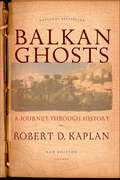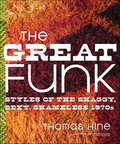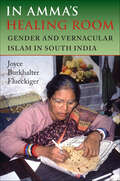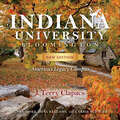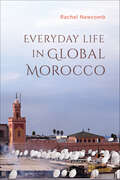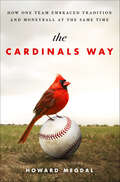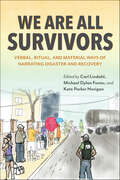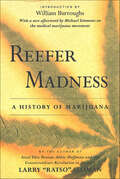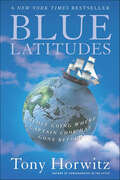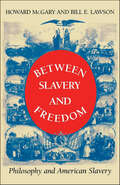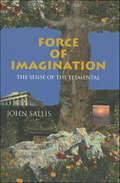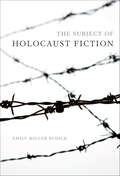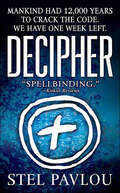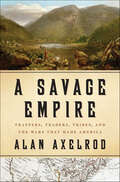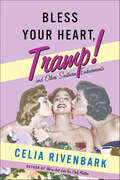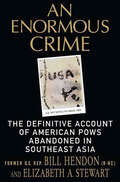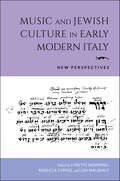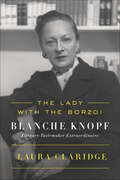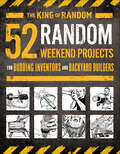- Table View
- List View
Balkan Ghosts: A Journey Through History
by Robert D. KaplanFrom the assassination that triggered World War I to the ethnic warfare in Serbia, Bosnia, and Croatia, the Balkans have been the crucible of the twentieth century, the place where terrorism and genocide first became tools of policy. Chosen as one of the Best Books of the Year by The New York Times, and greeted with critical acclaim as "the most insightful and timely work on the Balkans to date" (The Boston Globe), Kaplan's prescient, enthralling, and often chilling political travelogue is already a modern classic.This new edition of Balkan Ghosts includes six opinion pieces written by Robert Kaplan about the Balkans between 1996 and 2000 beginning just after the implementation of the Dayton Peace Accords and ending after the conclusion of the Kosovo war, with the removal of Slobodan Milosevic from power.
The Great Funk: Styles of the Shaggy, Sexy, Shameless 1970s
by Thomas HineIn the sixties, as the nation anticipated the conquest of space, the defeat of poverty, and an end to injustice at home and abroad, no goal seemed beyond America's reach. Then the seventies arrived-bringing oil shocks and gas lines, the disgrace and resignation of a president, defeat in Vietnam, terrorism at the 1972 Munich Olympics, urban squalor, bizarre crimes, high prices, and a bad economy. The country fell into a great funk. But when things fall apart, you can take the fragments and make something fresh. Avocado kitchens and Earth Shoes may have been ugly, but they signaled new modes of seeing and being. The first generation to see Earth from space found ways to make life's everyday routines-eating, keeping warm, taking out the trash-meaningful, both personally and globally. And many decided to reinvent themselves. In Populuxe, a "textbook of consumerism in the Push Button Age" (Alan J. Adler, Los Angeles Times), Thomas Hine scrutinized the looks and life of the 1950s and 1960s, revealing the hopes and fears expressed in that era's design. In the same way, The Great Funk: Falling Apart and Coming Together (on a Shag Rug) in the Seventies maps a complex era by looking at its ideas, feelings, sex, fashions, textures, gestures, colors, demographic forces, artistic expressions, and other phenomena that shaped our lives. Hine gets into the shoes and heads of those who experienced the seventies-exploring their homes, feeling the beat of their music, and scanning the ads that incited their desires. But The Great Funk is more than a lavish catalogue of seventies culture: it's a smart, informed, lively look at the "Me decade" through the eyes of the man House & Garden called "America's sharpest design critic."
In Amma's Healing Room: Gender and Vernacular Islam in South India
by Joyce Burkhalter Flueckiger"[I]t is extremely salubrious to see the ways Islam works in the lives of ordinary people who are not politicized in their religious lives. . . . No other book on South Asia has material like this." —Ann Grodzins GoldIn Amma's Healing Room is a compelling study of the life and thought of a female Muslim spiritual healer in Hyderabad, South India. Joyce Burkhalter Flueckiger describes Amma's practice as a form of vernacular Islam arising in a particular locality, one in which the boundaries between Islam, Hinduism, and Christianity are fluid. In the "healing room," Amma meets a diverse clientele that includes men and women, Muslim, Hindu, and Christian, of varied social backgrounds, who bring a wide range of physical, social, and psychological afflictions. Flueckiger collaborated closely with Amma and relates to her at different moments as daughter, disciple, and researcher. The result is a work of insight and compassion that challenges widely held views of religion and gender in India and reveals the creativity of a tradition often portrayed by Muslims and non-Muslims alike as singular and monolithic.
Indiana University Bloomington: America's Legacy Campus (Well House Books)
by J. Terry Clapacs Susan Moke Dina Kellams Carrie SchwierAmid the forested hills of southern Indiana stands one of America's most beautiful college campuses. Indiana University Bloomington: America's Legacy Campus, the new edition, returns the reader to this architectural gem and cultural touchstone. Revised and updated to include new buildings and features of campus life, it is a must have for any Hoosier. The IU Bloomington campus, rich in architectural tradition, harmonious in building scale and materials, and surrounded by natural beauty, stands today as a testimony to careful campus planning and committed stewardship. Planning principles adopted in the very early stages of campus development have been protected, enhanced, and faithfully preserved, resulting in an institution that can truly be called America's Legacy Campus. Lavishly illustrated and brimming with fascinating details, this book tells the story of Indiana University—a tale not only of buildings, architecture, and growth, but of the talented, dedicated people who brought the buildings to life. Completely updated with new buildings and an epilogue, and now even more lavishly illustrated, this new edition is a lasting tribute to the treasure that is Indiana University Bloomington.
Everyday Life in Global Morocco (Public Cultures Of The Middle East And North Africa Ser.)
by Rachel NewcombFollowing the story of one middle class family as they work, eat, love, and grow, Everyday Life in Global Morocco provides a moving and engaging exploration of how world issues impact lives. Rachel Newcomb shows how larger issues like gentrification, changing diets, and nontraditional approaches to marriage and fertility are changing what the everyday looks and feels like in Morocco. Newcomb's close engagement with the Benjelloun family presents a broad range of responses to the multifaceted effects of globalization. The lived experience of the modern family is placed in contrast with the traditional expectation of how this family should operate. This juxtaposition encourages new ways of thinking about how modern the notion of globalization really is.
The Cardinals Way: How One Team Embraced Tradition and Moneyball at the Same Time
by Howard MegdalThe Cardinals Way presents an inside look at the St. Louis Cardinals, a team that has emerged as the model organization in the MLB through developing young talent and embracing analytics.The St. Louis Cardinals have experienced the kind of success that is rare in baseball. Regarded by many as the premier organization in Major League Baseball, they not only win, but do so with an apparently bottomless pool of talent, one that is mostly homegrown.Despite years of phenomenal achievements, including going to the World Series in 2004 and again in 2006, the Cardinals reinvented themselves using the "Cardinal Way," a term that has come to represent many things to fans, media, and other organizations, from an ironclad code of conduct to the team's cutting-edge use of statistic and analytics, and a farm system that has transformed baseball.Baseball journalist Howard Megdal takes fans behind the scenes and off the field, interviewing dozens of key players within the Cardinals organization, including owner Bill DeWitt and the former general manager John Mozeliak. Megdal reveals how the players are assessed and groomed using an unrivaled player development system that has created a franchise that is the envy of the baseball world.In the spirit of Moneyball, The Cardinals Way tells an in-depth, fascinating story about a consistently good franchise, the business of sports in the twenty-first century and a team that has learned how to level the playing field, turning in season after successful season.
We Are All Survivors: Verbal, Ritual, and Material Ways of Narrating Disaster and Recovery
by Carl Lindahl, Michael Dylan Foster and Kate Parker HoriganWhat is the role of folklore in the discussion of catastrophe and trauma? How do disaster survivors use language, ritual, and the material world to articulate their experiences? What insights and tools can the field of folkloristics offer survivors for navigating and narrating disaster and its aftermath? Can folklorists contribute to broader understandings of empathy and the roles of listening in ethnographic work?We Are All Survivors is a collection of essays exploring the role of folklore in the wake of disaster. Contributors include scholars from the United States and Japan who have long worked with disaster-stricken communities or are disaster survivors themselves; individual chapters address Hurricane Katrina, Hurricane Maria, and two earthquakes in Japan, including the earthquake, tsunami, and nuclear disaster of 2011. Adapted from a 2017 special issue of Fabula (from the International Society for Folk Narrative Research), the book includes a revised introduction, an additional chapter with original illustrations, and a new conclusion considering how folklorists are documenting the COVID-19 pandemic.We Are All Survivors bears witness to survivors' expressions of remembrance, grieving, and healing.
Reefer Madness: A History of Marijuana
by Larry "Ratso" SlomanReefer Madness, a classic in the annals of hemp literature, is the popular social history of marijuana use in America. Beginning with the hemp farming of George Washington, author Larry "Ratso" Sloman traces the fascinating story of our nation's love-hate relationship with the resilient weed we know as marijuana. Herein we find antiheroes such as Allen Ginsberg, Robert Mitchum (the first Hollywood actor busted for pot), Louis Armstrong (who smoked pot every day), the Beatles, and more rapscallions standing up for, supporting, smoking, and politicizing the bounties of marijuana. With a new afterword by Michael Simmons, who has written for Rolling Stone, LA Weekly, and High Times, on the progress of the hemp movement and the importance of medical marijuana, Reefer Madness is a classic that goes on.
Blue Latitudes: Boldly Going Where Captain Cook Has Gone Before
by Tony HorwitzIn an exhilarating tale of historic adventure, the Pulitzer Prize-winning author of Confederates in the Attic retraces the voyages of Captain James Cook, the Yorkshire farm boy who drew the map of the modern world Captain James Cook's three epic journeys in the 18th century were the last great voyages of discovery. His ships sailed 150,000 miles, from the Artic to the Antarctic, from Tasmania to Oregon, from Easter Island to Siberia. When Cook set off for the Pacific in 1768, a third of the globe remained blank. By the time he died in Hawaii in 1779, the map of the world was substantially complete. Tony Horwitz vividly recounts Cook's voyages and the exotic scenes the captain encountered: tropical orgies, taboo rituals, cannibal feasts, human sacrifice. He also relives Cook's adventures by following in the captain's wake to places such as Tahiti, Savage Island, and the Great Barrier Reef to discover Cook's embattled legacy in the present day. Signing on as a working crewman aboard a replica of Cook's vessel, Horwitz experiences the thrill and terror of sailing a tall ship. He also explores Cook the man: an impoverished farmboy who broke through the barriers of his class and time to become the greatest navigator in British history.By turns harrowing and hilarious, insightful and entertaining, BLUE LATITUDES brings to life a man whose voyages helped create the 'global village' we know today.
We've Already Gone This Far: Stories
by Patrick DaceyA heartfelt, vital collection; the debut of an exciting new talent already hailed as one of George Saunders' "favorite young American writers"In Patrick Dacey's stunning debut, we meet longtime neighbors and friends--citizens of working-class Wequaquet--right when the ground beneath their feet has shifted in ways they don't yet understand. Here, after more than a decade of boom and bust, love and pride are closely twinned and dangerously deployed: a lonely woman attacks a memorial to a neighbor's veteran son; a dissatisfied housewife goes overboard with cosmetic surgery on national television; a young father walks away from one of the few jobs left in town, a soldier writes home to a mother who is becoming increasingly unhinged. We've Already Gone This Far takes us to a town like many towns in America, a place where people are searching for what is now an almost out-of-reach version of the American DreamStory by story, Dacey draws us into the secret lives of recognizable strangers and reminds us that life's strange intensity and occasional magic is all around us, especially in the everyday. With a skewering insight and real warmth of spirit, Dacey delivers that rare and wonderful thing in American fiction: a deeply-felt, deeply-imagined book about where we've been and how far we have to go.
The Fun Stuff: And Other Essays
by James WoodFollowing The Broken Estate, The Irresponsible Self, and How Fiction Works—books that established James Wood as the leading critic of his generation—The Fun Stuff confirms Wood's preeminence, not only as a discerning judge but also as an appreciator of the contemporary novel. In twenty-three passionate, sparkling dispatches—that range over such crucial writers as Thomas Hardy, Leon Tolstoy, Edmund Wilson, and Mikhail Lermontov—Wood offers a panoramic look at the modern novel. He effortlessly connects his encyclopedic, passionate understanding of the literary canon with an equally in-depth analysis of the most important authors writing today, including Cormac McCarthy, Lydia Davis, Aleksandar Hemon, and Michel Houellebecq. Included in The Fun Stuff are the title essay on Keith Moon and the lost joys of drumming—which was a finalist for last year's National Magazine Awards—as well as Wood's essay on George Orwell, which Christopher Hitchens selected for the Best American Essays 2010. The Fun Stuff is indispensable reading for anyone who cares about contemporary literature.
Amtrak, America's Railroad: Transportation's Orphan and Its Struggle for Survival (Railroads Past and Present)
by Jeffrey T. Darbee Geoffrey H. Doughty Eugene E. HarmonDiscover the story of Amtrak, America's Railroad, 50 years in the making.In 1971, in an effort to rescue essential freight railroads, the US government founded Amtrak. In the post–World War II era, aviation and highway development had become the focus of government policy in America. As rail passenger services declined in number and in quality, they were simultaneously driving many railroads toward bankruptcy. Amtrak was intended to be the solution.In Amtrak, America's Railroad: Transportation's Orphan and Its Struggle for Survival, Geoffrey H. Doughty, Jeffrey T. Darbee, and Eugene E. Harmon explore the fascinating history of this popular institution and tell a tale of a company hindered by its flawed origin and uneven quality of leadership, subjected to political gamesmanship and favoritism, and mired in a perpetual philosophical debate about whether it is a business or a public service. Featuring interviews with former Amtrak presidents, the authors examine the current problems and issues facing Amtrak and their proposed solutions.Created in the absence of a comprehensive national transportation policy, Amtrak manages to survive despite inherent flaws due to the public's persistent loyalty. Amtrak, America's Railroad is essential reading for those who hope to see another fifty years of America's railroad passenger service, whether they be patrons, commuters, legislators, regulators, and anyone interested in railroads and transportation history.
Mount Pleasant: A Novel
by Patrice NganangA majestic tale of colonialism and transformation, Patrice Nganang's Mount Pleasant tells the astonishing story of the birth of modern Cameroon, a place subject to the whims of the French and the Germans, yet engaged in a cultural revolution.In 1931, Sara is taken from her family and brought to Mount Pleasant as a gift for Sultan Njoya, a ruler cast into exile by French colonialists. Merely nine years old, she is on the verge of becoming the sultan’s 681st wife. But when she is dragged to Bertha, the long-suffering slave charged with training Njoya’s brides, Sara’s life takes a curious turn. Bertha sees within this little girl her son Nebu, who died tragically years before, and she saves Sara from her fate by disguising her as her son. In Sara’s new life as a boy she bears witness to the world of Sultan Njoya---a magical yet vulnerable community of artists and intellectuals---and learns of the sultan’s final days in the Palace of All Dreams and the sad fate of Nebu, the greatest artist their culture had ever seen.Seven decades later, a student returns home to Cameroon to learn about the place it once was, and she finds Sara, silent for years, ready to tell her story. But her serpentine tale, entangled by flawed memory and bursts of the imagination, reinvents history anew. The award-winning novelist Patrice Nganang’s Mount Pleasant is a lyrical resurrection of early-twentieth-century Cameroon and an elegy to the people swept up in the forces of colonization.
Between Slavery and Freedom: Philosophy and American Slavery (Blacks in the Diaspora)
by Bill E. Lawson Howard McGaryUsing the writings of slaves and former slaves, as well as commentaries on slavery, Between Slavery and Freedom explores the American slave experience to gain a better understanding of six moral and political concepts—oppression, paternalism, resistance, political obligation, citizenship, and forgiveness. The authors use analytical philosophy as well as other disciplines to gain insight into the thinking of a group of people prevented from participating in the social/political discourse of their times.Between Slavery and Freedom rejects the notion that philosophers need not consider individual experience because philosophy is "impartial" and "universal." A philosopher should also take account of matters that are essentially perspectival, such as the slave experience. McGary and Lawson demonstrate the contribution of all human experience, including slave experiences, to the quest for human knowledge and understanding.
Force of Imagination: The Sense of the Elemental (Studies in Continental Thought)
by John SallisForce of ImaginationThe Sense of the ElementalJohn SallisA bold and original investigation into how imagination shapes thought and feeling."This is a bold new direction for the author, one that he takes in an arresting and convincing manner. . . . a powerful, original approach to what others call 'ecology' but what Sallis shows to be a question of the status of the earth in philosophical thinking at this historical moment." —Edward S. CaseyIn this major original work, John Sallis probes the very nature of imagination and reveals how the force of imagination extends into all spheres of human life. While drawing critically on the entire history of philosophy, Sallis's work takes up a vantage point determined by the contemporary deconstruction of the classical opposition between sensible and intelligible. Thus, in reinterrogating the nature of imagination, Force of Imagination carries out a radical turn to the sensible and to the elemental in nature. Liberated from subjectivity, imagination is shown to play a decisive role both in drawing together the moments of our experience of sensible things and in opening experience to the encompassing light, atmosphere, earth, and sky. Set within this elemental expanse, the human sense of time, of self, and of the other proves to be inextricably linked to imagination and to nature. By showing how imagination is formative for the very opening upon things and elements, this work points to the revealing power of poetic imagination and casts a new light on the nature of art.John Sallis is Liberal Arts Professor of Philosophy at Pennsylvania State University. His previous books include Being and Logos: Reading the Platonic Dialogues; Shades—Of Painting at the Limit; Stone; Chorology: On Beginning in Plato's Timaeus (all published by Indiana University Press), Crossings: Nietzsche and the Space of Tragedy and Double Truth.Studies in Continental Thought—John Sallis, editorContentsProlusionsOn (Not Simply) BeginningRemembranceDuplicity of the ImageSpacing the ImageTractive ImaginationThe ElementalTemporalitiesProprietiesPoetic Imagination
The Subject of Holocaust Fiction (Jewish Literature And Culture Ser.)
by Emily Miller BudickFictional representations of horrific events run the risk of undercutting efforts to verify historical knowledge and may heighten our ability to respond intellectually and ethically to human experiences of devastation. In this captivating study of the epistemological, psychological, and ethical issues underlying Holocaust fiction, Emily Miller Budick examines the subjective experiences of fantasy, projection, and repression manifested in Holocaust fiction and in the reader's encounter with it. Considering works by Cynthia Ozick, Art Spiegelman, Aharon Appelfeld, Michael Chabon, and others, Budick investigates how the reading subject makes sense of these fictionalized presentations of memory and trauma, victims and victimizers.
Decipher
by Stel PavlouMANKIND HAS HAD 12,000 YEARS TO DECIPHER THE MESSAGE,WE HAVE ONE WEEK LEFT....There is a signal emanating from deep within the ice of Antarctica. Atlantis has awoken. Ancient monuments all over the worlds from the Pyramids of Giza, to Mexico to the ancient sites of China are reacting...to a brewing crisis not of this earth, but somewhere out in the solar system. Connecting to each other through the oceans. Using low frequency sound waves to create an ancient network. The earth is thrown into panic stations. For it seems that the signals emanating from Atlantis are a prelude to something much greater. Could it be that the entire city is in fact one giant ancient machine? And to what end? For what purpose? It is the year 2012, the same year Mayan belief prophesised the end of the world. Two armies, American and Chinese stand on the brink of war for the control of the most potent force ever known to man. The secrets of Atlantis. Secrets which are encoded in crystal shards retrieved from the sunken city. Secrets which Mankind has had twelve thousand years to decipher...but which will now destroy it within one week.
A Savage Empire: Trappers, Traders, Tribes, and the Wars That Made America
by Alan AxelrodA surprising and sweeping history that reveals the fur trade to be the driving force behind conquest, colonization, and revolution in early AmericaCombining the epic saga of Hampton Sides's Blood and Thunder with the natural history of Mark Kurlansky's Cod, popular historian Alan Axelrod reveals the astonishingly vital role a small animal—the beaver—played in the creation of our nation. The author masterfully relays a story often neglected by conventional histories: how lust for fur trade riches moved monarchs and men to launch expeditions of discovery, finance massive corporate enterprises, and wage war. Deftly weaving cultural and military narratives, the author chronicles how Spanish, Dutch, French, English, and Native American tribes created and betrayed alliances based on trapping and trade disputes, producing a surprisingly complex series of loyalties that endured throughout the Revolution and beyond.
Bless Your Heart, Tramp!: And Other Southern Endearments
by Celia RivenbarkFrom the wickedly hilarious pen of Southern humorist Celia Rivenbark comes a collection of essays that brings to mind Dave Barry (in high heels) or Jeff Foxworthy (in a prom dress).Step into the wacky world of "womanless wedding" fund-raisers, in which Bubbas wear boas. Meet two sisters who fight rural boredom by washing Budweiser cans and cutting them into pieces to make clothing. Learn why the word snow sends any right-thinking Southerner careening to the Food Lion for extra loaves of bread and little else. Humor columnist and slightly crazed belle-by-birth Celia Rivenbark tackles these and other lard-laden subjects in Bless Your Heart, Tramp, a hilarious look at Southern---and just plain human---foibles, up-close and personal. So pour yourself a glass of sweet tea and curl up on the pie-azza with Bless Your Heart, Tramp.
Peasant Fires: The Drummer of Niklashausen
by Richard Wunderli" . . . lively and intellectually stimulating . . . " —Speculum"Wunderli . . . has lucidly reconstructed a controversial conflict in 15th-century south-central Germany. . . . this engaging narrative takes off from Hans Behem—the peasant who claimed to see the Virgin and gained followers until crushed by the established church—to explore larger forces at work in Germany on the eve of the Reformation. . . Wunderli also attempts to sort out the violent conflict that ensued and Hans's subsequent trial. His scrupulousness and sensitivity make for a small but valuable book." —Publishers Weekly"Fascinating and well written, this is highly recommended for academic and larger public libraries." —Library Journal"Richard Wunderli . . . deftly tells the story in Peasant Fires, finding in it a foreshadowing of peasant uprisings in the 16th century." —New York Times Book Review" . . . a stimulating read . . . an engaging synthesis." —Central European HistoryIn 1476, an illiterate German street musician had a vision of the Virgin Mary and began to preach a radical social message that attracted thousands of followers—and antagonized the church. The drummer was burned at the stake. This swiftly moving narrative of his rise and fall paints a vivid portrait of 15th-century German society as it raises important questions about the craft of history."A gem of a book. . . . It has a plot, good guys and bad buys, it opens up a 'strange' world, and it is exceptionally well written." —Thomas W. Robisheaux
An Enormous Crime: The Definitive Account of American POWs Abandoned in Southeast Asia
by Elizabeth A. Stewart Bill HendonTHE NEW YORK TIMES BESTSELLERAn Enormous Crime is nothing less than shocking. Based on thousands of pages of public and previously classified documents, it makes an utterly convincing case that when the American government withdrew its forces from Vietnam, it knowingly abandoned hundreds of POWs to their fate.The product of twenty-five years of research by former Congressman Bill Hendon and attorney Elizabeth A. Stewart, this book brilliantly reveals the reasons why these American soldiers and airmen were held back by the North Vietnamese at Operation Homecoming in 1973, what these brave men have endured, and how administration after administration of their own government has turned its back on them.This authoritative exposé is based on open-source documents and reports, and thousands of declassified intelligence reports and satellite imagery, as well as author interviews and personal experience. An Enormous Crime is a singular work, telling a story unlike any other in our history: ugly, harrowing, and true.
Music and Jewish Culture in Early Modern Italy: New Perspectives (Music and the Early Modern Imagination)
by Lynette Bowring, Rebecca Cypess and Liza MalamutMusical culture in Jewish communities in early modern Italy was much more diverse than researchers originally thought. An interdisciplinary reassessment, Music and Jewish Culture in Early Modern Italy evaluates the social, cultural, political, economic, and religious circumstances that shaped this community, especially in light of the need to recognize individual experiences within minority populations. Contributors draw from rich materials, topics, and approaches as they explore the inherently diverse understandings of music in daily life, the many ways that Jewish communities conceived of music, and the reception of and responses to Jewish musical culture. Highlighting the multifaceted experience of music within Jewish communities, Music and Jewish Culture in Early Modern Italy sheds new light on the place of music in complex, previously misunderstood environments.
Charles Jessold, Considered as a Murderer: A Novel
by Wesley StaceOne of The Wall Street Journal's Best fiction books of 2011England, 1923. A gentleman critic named Leslie Shepherd tells the macabre story of a gifted young composer, Charles Jessold. On the eve of his revolutionary new opera's premiere, Jessold murders his wife and her lover, and then commits suicide in a scenario that strangely echoes the plot of his opera---which Shepherd has helped to write. The opera will never be performed.Shepherd first shares his police testimony, then recalls his relationship with Jessold in his role as critic, biographer, and friend. And with each retelling of the story, significant new details cast light on the identity of the real victim in Jessold's tragedy.This ambitiously intricate novel is set against a turbulent moment in music history, when atonal sounds first reverberated through the concert halls of Europe, just as the continent readied itself for war. What if Jessold's opera was not only a betrayal of Shepherd, but of England as well? Wesley Stace has crafted a dazzling story of counter-melodies and counter-narratives that will keep you guessing to the end.
The Lady with the Borzoi: Blanche Knopf, Literary Tastemaker Extraordinaire
by Laura ClaridgeThe untold story of Blanche Knopf, the singular woman who helped define American literatureLeft off her company’s fifth anniversary tribute but described by Thomas Mann as “the soul of the firm,” Blanche Knopf began her career when she founded Alfred A. Knopf with her husband in 1915. With her finger on the pulse of a rapidly changing culture, Blanche quickly became a driving force behind the firm. A conduit to the literature of Langston Hughes and the Harlem Renaissance, Blanche also legitimized the hard-boiled detective fiction of writers such as Dashiell Hammett, James M. Cain, and Raymond Chandler; signed and nurtured literary authors like Willa Cather, Elizabeth Bowen, and Muriel Spark; acquired momentous works of journalism by John Hersey and William Shirer; and introduced American readers to Albert Camus, André Gide, and Simone de Beauvoir, giving these French writers the benefit of her consummate editorial taste. As Knopf celebrates its centennial, Laura Claridge looks back at the firm’s beginnings and the dynamic woman who helped to define American letters for the twentieth century. Drawing on a vast cache of papers, Claridge also captures Blanche’s “witty, loyal, and amusing” personality, and her charged yet oddly loving relationship with her husband. An intimate and often surprising biography, The Lady with the Borzoi is the story of an ambitious, seductive, and impossibly hardworking woman who was determined not to be overlooked or easily categorized.
52 Random Weekend Projects: For Budding Inventors and Backyard Builders
by The King of RandomFrom one of the most popular project channels on YouTube comes a how-to book on building things that go boom. Grant Thompson, "The King of Random," has created one of the most popular project channels on YouTube, featuring awesome videos such as How to Make a Laser Assisted Blowgun and Assassin’s Micro Crossbow. He currently has almost 10 million subscribers, posts 5 times a week, and averages over 40 million views a month.Partnering with Grant is Ted Slampyak, the artist behind the #1 New York Times bestseller 100 Deadly Skills.52 Random Weekend Projects: For Budding Inventors and Backyard Builders is a guide that enables ordinary folks to build an impressive arsenal of projects. These crafts combine some of Grant’s most popular projects—Matchbox Rockets, Pocket Slingshot Super Shooters, Proto-Putty, Ninja Balls, Mini Matchstick Guns, The Clothespin Pocket Pistol—with many new ones, providing clear instructions on how to build them step-by-step.Broken down into Beginner, Intermediate, and Advanced sections, 52 Random Weekend Projects is loaded with truly amazing projects, including:- Mousetrap Handgun- Mini Solar Scorcher- Air Vortex Canon- Air Mounted Skewer Shooter- Paracord Bullwhip- Bottle Cap Party Whistle- Ninja Stress Balls- Tablecloth Parachute- Skyblaster SlingshotAnd many more!
